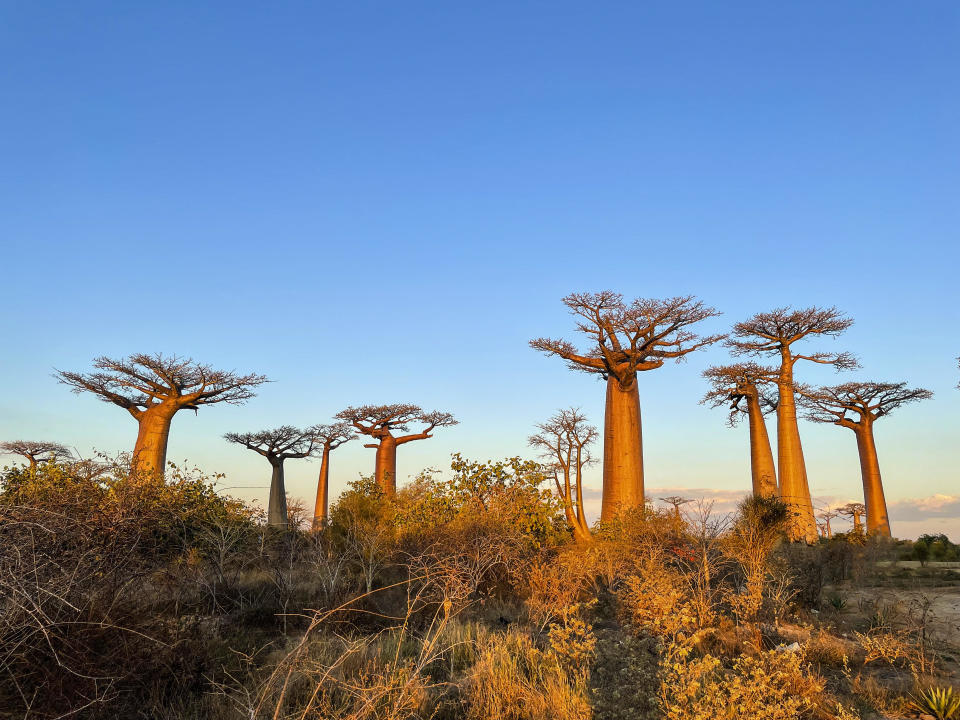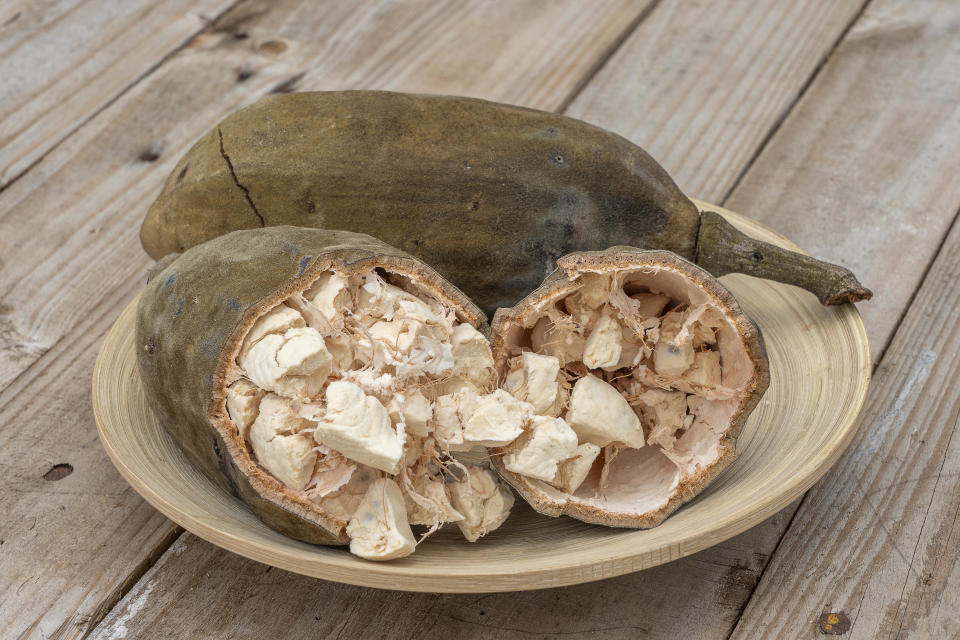Mysterious origin of the "tree of life" revealed
The "grotesque" baobab tree has long been known as the "tree of life" for its ability to create and maintain its own ecosystem in arid regions. Since the time of the ancient Egyptians, people have marveled at what researchers say is among "the most charismatic species on our planet," but nobody knew where they originated from – until now.
There are currently eight species of the tall and wide-trunked plants, also known as upside-down trees or "mother of the forest." Of these groups, six species are found on Madagascar, one is found across continental Africa and another is found only in northwestern Australia.
But only one of those locations is the true origin of them all.
Researchers say they solved the mystery of the "spectacular trees" using the species' DNA . In a new study published in Nature, they said all the trees came from the African island nation of Madagascar.

Baobabs have "captivated botanists, tourists, naturalists and passers-by for centuries," the study says. "Probably the earliest record of humans marvelling at these amazing trees can be traced back to the Ancient Egyptians, around 2,300 BC. With their grotesque appearance, enormous size, reputed longevity and diverse uses, baobabs have become one of the most charismatic species on our planet."
Nailing down that charisma was difficult. But researchers say that after picking leaves off the species and analyzing genomes, they were able to determine that their common ancestor was based in Madagascar. Over time, members of the species were radiated off the island, making hybrid species that would evolve to have different flowers that attract various other animals.
"We were delighted to be involved in this project uncovering patterns of baobab speciation in Madagascar followed by the astonishing long-distance dispersal of two species, one to Africa and another to Australia," Queen Mary University of London professor Andrew Leitch said. "This was accompanied by the evolution of some fascinating pollination syndromes involving hawkmoths, lemurs and bats."

According to the San Diego Zoo Wildlife Alliance, baobabs are "like no other."
"A thick, bottle-like trunk rises to support spindly branches. Baobabs are deciduous, and during the dry season (which can last up to nine months), the bare branches of a baobab resemble a gnarled root system, and make these trees look as if they were pulled up by the roots and pushed back in upside down," the organization says.
The alliance says that the trees not only serve a key role in their ecosystems, but create their own. Along with helping soil stay humid, recycle nutrients and prevent erosion, they also provide food, water and shelter to other species.
The smallest of the baobab species grows to 16 feet, while the largest of the trees can grow to be about 82 feet tall, with a circumference that measures the same, or even more. For comparison, a semitruck is typically around 72 feet long.
But many of these trees are facing a conservation battle. All but one of the species is including the IUCN Red List of Threatened Species, with three considered to be threatened with extinction, one considered critically endangered and another considered endangered, the study says. Only one species is classified "least concern," although its populations are declining.
The DNA findings show that some of the trees have low genetic diversity, a key component of species' survival as it helps establish resilience to environmental changes. Their findings also suggest climate change "will pose severe threats" to one of the Madagascar-based species and could force it to go extinct before 2080. Based on this, study researchers say that their findings should be cause for re-evaluation of the conservation status of the baobabs.
The San Diego Zoo Wildlife Alliance also noted a "rapid increase" in deaths of the trees in southern Africa.
"Of the continent's 13 largest baobabs, 9 have collapsed and died," the group said. "The cause is unclear, but scientists suspect that global climate change may be playing a role in the demise of these trees."
Woman attacked by bull on Mexico beach after ignoring warnings
Rep. Marjorie Taylor Greene insults colleague's appearance on House floor

